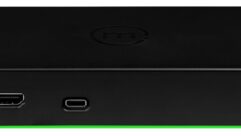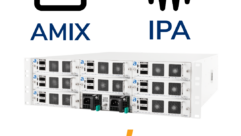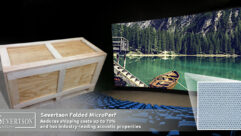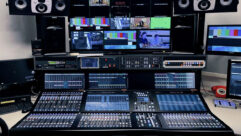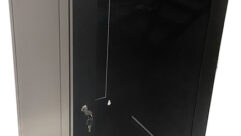Of application features
Feb 20, 1997 12:00 PM,
Keith ClarkClark is public relations manager of Eastern Acoustic Works.
Application features appear in all our trade magazines; they fill several annual issues of this one; they’re quite popular with both readers and the publications. What are they?
Here’s my definition: An applications feature describes a real project from concept to completion. It includes photos and drawings explaining and highlighting both the technical and human elements producing the end result.
Over the past eight years, I’ve had the pleasure of writing hundreds of application feature articles for professional audio, audiovisual and systems publications. If I’ve done my job correctly, an applications feature should provide you some kernel of information you can use in your business.
Perhaps the article describes a unique technology, product or combination of products you can exploit profitably in your own projects. Perhaps the article describes a collaboration of talents that helped overcome a design or installation problem. Perhaps the contractor used an innovative marketing technique to land the contract.
Through the years I’ve found each project unique. Even if you’re designing a bread-and-butter sound system for a school assembly hall and you’ve done this many times before, you know each hall, and thus system, has its own quirks. Each presents at least one unexpected challenge and offers at least one new reward. If the author of an applications feature looked hard enough, asked the right questions and was accurate and complete, the feature includes something the reader can use on the next project.
Technical diagrams are a key part of a successful applications feature. You don’t read these articles wanting to be filled with admiration for some other contractor. You don’t read them because you think big loudspeakers are nifty. You read them to find out how others do this type of job and to see what you can learn to make your similar jobs better. A clean, concise drawing strengthens the article. If a picture is worth a thousand words, a technical diagram is worth two thousand.
Last month’s issue focused on designing and installing systems for live performing arts. It was a “how-to” issue. In this issue, an auditorium systems review, we turn to “how-did.” We see that no two jobs are ever exactly alike. All these features describe systems created for large performance venues. Notice that many of the venues and their purposes are often quite similar. But in each case, the systems designer took a different design and installation approach. We hope that a thorough look at the scientific and the technical, followed by real applications from the field, work together to supply a better overall understanding of this system type and, ultimately, all systems.
Earlier I said it was a pleasure to write application features. That’s mostly due to the people in our industry. Your true passion to get it done right is always infectious. You go about your work with unflagging commitment, enthusiasm and genuine excitement. One doesn’t see that often in other lines of work. This is why my interviews with designers and installers are so exhilarating. In the early stages of your design, the computer screen is empty, and your myriad choices are more foe than opportunity. Soon the CAD screen starts to fill, you’re generating file after file, and the system begins to appear on paper, resembling what it will be when installed.
The installation portion presents its own nuances and challenges. Why did that support beam wind up 10 feet (3 m) further upstage than my copy of the architectural plans called for? How do we get a 20 foot (6 m) crane through a 12 foot (3.7 m) doorway? As the philosopher asks, if the conduit was specified but can’t be found behind the wall, does it really exist?
Finally, success. Your ideas, innovations and determination have become reality. The system exceeds anything the client could have expected. You’re even a little impressed yourself.
After hearing your whole story in detail, it’s my turn to write the article. My computer screen is blank, ready for the ideas and information I’ve just heard to be organized into an article that does justice to your work. And the pleasure’s all mine.


